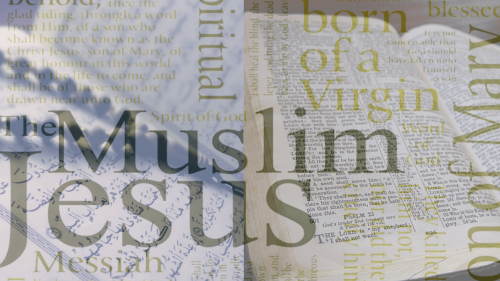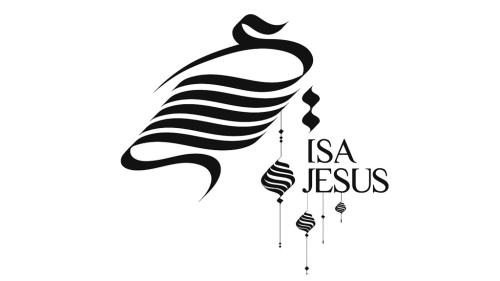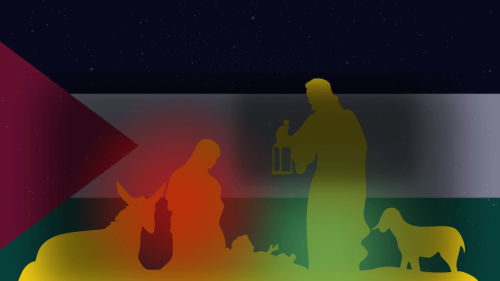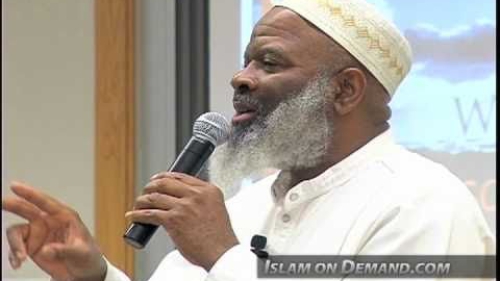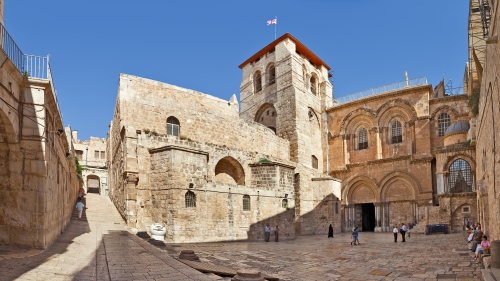Global Strides in Climate Action: A Religious Perspectives

Although 2023 ended with two major active wars; this year has also seen five remarkable steps forward in tackling two global nature and climate crises.
Energy from renewables like wind and solar grew faster than the world's power demand did, which means emissions from this sector edged downwards for the first time in human history.
After decades of negotiations, countries have finally agreed to a treaty to protect the world's oceans that lie outside national boundaries. Until now, just 1% of these waters have been protected. The High Seas Treaty provides a framework for setting up marine protected areas, a crucial step to protect 30% of the world's oceans by 2030.
In Brazil, the rate of deforestation in the Amazon rainforest dropped sharply after Brazil's new government pledged to stop deforestation completely by 2030, and took steps including monitoring the forest for criminal activity such as illegal logging. In Colombia, the rate has also slowed sharply.
At COP28 world leaders finally agreed to launch the long-awaited fund for loss and damage caused by climate change. A long-overdue $100 billion annual pledge to countries hit by climate impacts was also met for the first time this year.
In the mid 1980s the population of condors North America’s largest bird had dwindled to nearly zero. The few remaining wild condors were brought into zoos in the early 1980s as part of a captive breeding program aimed at restoring the condor population. A small group of the birds reproduced, and eventually many of the condors were released back into the wild. Now nearly 350 of these majestic scavengers, whose wings can span 9 feet once again fly over parts of California and Arizona.
And most important of all, the final COP28 agreement agreed for the first time to included a goal to move away from fossil fuels.
Yet millions of the world’s people believe that the challenge of climate change is the beginning of the end-time events that precede the coming of the Christian Messiah Jesus and/or the Muslim Mahdi. But these people do not really know much about the messianic concepts in Judaism whose Prophets first revealed these end-time events and ideas.
The figure of a Messiah has been central to Christianity, important but not central to Rabbinic Judaism, and a part of but not central or even very important to Islam.
Christians who believe in a Divine Son of God Messiah, do not draw a distinction between the Hebrew Bible’s eschatological hopes for God’s glorious future age of world wide peace and justice, and an individual hero Messiah who is a descendant of Prophet David the king.
That a human being could be a Jewish Messiah and simultaneously be a God is totally foreign and repulsive to the Hebrew Bible and the Qur’an. As Qur’an 5:72 states: “They blaspheme who say: "Allah is Christ [Greek for Messiah] the son of Mary." But said [Messiah] Christ: "O Children of Israel! worship Allah, my Lord and your Lord." Whoever joins other gods with Allah, Allah will forbid him the garden [of Eden], and the Fire [of Hell] will be his abode.”
And as Allah says: "O Jesus the son of Mary! Did you say to people, worship me and my mother as gods in derogation of Allah'?" He will say: "Glory to You; never could I say what I had no right (to say). Had I said such a thing, you would indeed have known it. You know what is in my heart . . .” (Qur’an. 5:116) Jews are in full accord with this.
In the Hebrew Bible the primary cause of the Messianic Age is God. That a specific human being would play an important role in ushering in the Messianic Age, is a concept that only became defined during the post Biblical period in the late second century BCE.
For Jews, one of the most important events of the Messianic Age is the ingathering of those Jews still living in exile. “The Lord, your God, will bring back your exiles, and He will have mercy upon you. He will once again gather you from all the nations, where the Lord, your God, had dispersed you”. (Deuteronomy 30:3)
“He shall gather the lost ones of Israel, and the scattered ones of Judah He shall gather [them] from the four corners of the earth.” (Isaiah 11:12) and “I will return your captivity and gather you from all the nations, and from all the places where I have driven you, says the Lord, and I will return you to the place from where I exiled you”. (Jeremiah 29:14)
The Qur’an itself refers to this: “We conveyed to the Children of Israel in the Scripture that, "You will surely cause corruption on the earth twice [once before the first exile and again before the second exile], and you will surely reach [some degree of] great haughtiness. So when the [time of] promise came for the first [exile] of them {from Judea}, We sent against you servants of Ours [the Babylonians} those of great military might, and they probed [even] into the[the people’s] homes, and it was a promise fulfilled. Then We gave back to you a return victory over them [the defeat of Babylonia and the first ingathering aided by the Persian King Cyrus].
“And We reinforced you with wealth and sons and made you more numerous in manpower. [so], "If you do good, you do good for yourselves; and if you do evil, [you do it] to yourselves." Then when the final promise came, [We sent Rome] to sadden your faces and to enter the Temple in Jerusalem, as they [the Babylonians] entered it the first time, and to destroy what they had taken over with (much) destruction. [So], "It is expected, [if you repent], that your Lord will have mercy upon you [and gather you in again]. But if you return [to sin], We will return [to punishment]. And We have made Hell, for disbelievers, a prison-bed.” (Qur’an 17:4-8)
The Book 1 Enoch marks a new religious perspective. So familiar do 1 Ezra’s themes look in retrospect – angels, personal and national Judgment, one or two Messiahs, plus a Son of Man [the term Jesus almost always called himself]– that we can easily fail to appreciate just how startling they were in the third and second centuries BCE, and what a great departure they mark from the familiar words of Israel’s Prophets which rarely mention an individual messiah.
The first book of Enoch includes a classic vision of the last days with a final Judgment, rewards for the blessed and punishments for sinners; all the result of God’s own actions. In a later section known as the Parables, a messianic Son of Man is central to these events (chapters 37-71).
The richest sources for new ideas about Messiahs come from the Dead Sea Scrolls, which have revolutionized our view of last days debates in the generations before and after Jesus’s lifetime.
Taking the Dead Sea Scrolls documents together, the vision of an individual messiah king got a boost from events during the Maccabean (Hasmoneans) age, even though that dynasty clearly represented a break from the Davidic line to a novel priestly line of rulers. As messianic visions became more important to Jewish thought during the second and first century BCE the Dead Sea Scrolls give evidence of the diversity of those approaches.
The Qumran Scrolls are usually associated with a Jewish sect tied to the Essenes and to First and Fourth Book of Enoch traditions. Most of the texts were written or at least preserved at the Jewish settlement of Qumran, founded around 160 BC, which survived over two hundred years, until the Jewish revolt of the late 60s CE. The Dead Sea Scrolls discoveries also show the role of multiple messiahs, and eschatological figures. At least three figures in the Scrolls, all of them totally human, fit the messianic definition; a Prophet, a Priest and a King.
When Prophet John the Baptist came, the Jews asked him if he was a Messiah and he said “No”; they asked him if he was a pre-Messiah warner like Elijah and he said “No”. then in apparent reference to Deuteronomy 18:18, they asked him “Are you that Prophet [like Moses}” and he answered, “No”. (John 1:19-21).
The Damascus Covenant, for instance, refers to the messiahs from Aaron and Israel. Broadly, the Scrolls offer a “dual messianism,” with two key figures, so that the messiah of Aaron is a priestly religious counterpart to the more political or militant Davidic messiah.
Davidic titles are, though, much more common. The Genesis Pesher (4Q252 5:1-4) includes the words, “until the Messiah of Righteousness comes, the Branch of David.” In the Prayer of Enosh (4Q369), someone is compared to God’s “First Born Son,” but a great deal of Biblical evidence suggests that this designation is meant to apply to Israel as a whole.
Also 4Q521, a “Messianic Apocalypse,” which specifically mentions a Messiah, describes God alone “releasing captives, giving sight to the blind and raising up those who are downtrodden.’
And the “War of the Messiah,” which includes the text 4Q285 refers to a Messiah piercing, as in slaying his enemies.
According to the Qur’an (6:85) the last of the Jewish Prophets were: “Zakariya, John, Jesus and Elias: all in the ranks of the righteous.” Prophet Jesus was also a Messianic figure who will return during the Last Days of turmoil preceding the victory of good over evil in God’s Judgement Day and Messianic Age for all the righteous of mankind. The term for Prophet Jesus “al-Masih” [the Messiah in Hebrew] is used eleven times in the Qur’an in verses: 3:45, 4:157, 4:171, 4:172, 5:17 (twice), 5:72 (twice), 5:75, 9:30, and 9:31
If Prophet Jesus was a Messianic figure, a Messiah of Righteousness, the Branch [descendent] of David; then Prophet Muhammad would be the Khatam an-Nabiyyin, the Seal of the Prophets; who was able to inspire a very long lasting religious community; plus being a Prophet validating previous messengers and their sacred scriptures. This dual role is unique to Prophet Muhammad as the Khatam an-Nabiyyin, the Seal [validator] of the Prophets.
“Indeed, the believers, Jews, Christians, and Sabians—whoever truly believes in God and the Last Day and does good will have their reward with their Lord. And there will be no fear for them, nor will they grieve.” (Quran 2:62)
O mankind, We created you from male and female, and made you peoples and tribes, that you may know (respect) one another. Indeed, the most noble of you in the sight of Allah is the most righteous of you. Indeed, Allah is Knowing and Acquainted. (Quran 49:13)
"Let there be no compulsion in Religion: truth stands out clear from error: whoever rejects evil and believes in Allah (one God) has grasped the most trustworthy unbreakable hand hold: Allah hears, and knows all things." (Qur’an:2:256)
"Say: we believe in God and in what has been revealed to us, and what was revealed to Abraham, Isma'il: Isaac, Jacob and The [12] Tribes, and in (the Books) given to Moses, Jesus and the Prophets, from their Lord: We make no distinction between one and another, among them, and to God do we bow our will (in Islam)." (Qur'an 3:84)
Just as all God’s Prophets are muslims in the generic meaning to the word, because they have all submitted to God’s will [although only Prophet Muhammad was a member of the Islamic Ummah]; so too is every one a muslims in the generic meaning to the word, who truly believes in One God, and the Last Days, and does righteousness, kindness and goodness.
The classical rabbinic exegetical text Pirkei deRabbi Eliezer, attributed to the late first century Jewish sage, Rabbi Ishmael ben Elisha, contains references that prophesied the rebuilding of the Jerusalem Temple not just by Jews; but also by bnei Yishmael, (the sons of Ishmael). The Pirkei deRabbi Eliezer final chapter 30, lists 15 things that the sons of Prophet Ishmael will do in the holy land at the End of Days.
One is particularly interesting: “Rabbi Ishmael said: The sons of Ishmael will do fifteen things at the end of days…. They will rebuild the breaches in the wall of the beyt hamikdash (bayt al maqdis); and build a broadcast structure near the central sanctuary of the Holy Temple”. This broadcast structure could be in the near future, a virtual reality broadcast station from a small physical building on some open space near the Dome of the Rock.
Just as millions of Muslims can join every day with tens of thousands of Muslims pilgrims praying and circling around the cube-shaped Kaaba at Islam’s most sacred site; Jews would be able to strap on a headset and enter the holy city of Jerusalem, and see and hear Jewish prayers at the Western Wall, and someday God willing, as broadcast from the virtual reality Jerusalem Temple, without ever leaving their own homes.
The Qur’an refers to Prophet Abraham as a community or a nation: “Abraham was a nation/community [Ummah]; dutiful to God, a monotheist [hanif], not one of the polytheists.” (16:120) If Prophet Abraham is an Ummah then fighting between the descendants of Prophets Ishmael and Isaac is a civil war and should always be avoided.
If all Arabs and Jews can live up to the ideal that ‘the descendants of Abraham’s sons should never make war against each other’ is the will of God; we will help fulfill the 2700 year old vision of Prophet Isaiah:
“In that day there will be a highway from Egypt to Assyria. The Assyrians will go to Egypt, and the Egyptians to Assyria. The Egyptians and Assyrians will worship together. In that day Israel will join a three-party alliance with Egypt and Assyria, a blessing upon the heart. The LORD of Hosts will bless them saying, “Blessed be Egypt My people, Assyria My handiwork, and Israel My inheritance.”…(Isaiah 19:23-5)
Topics: Dead Sea, Mary (Mother Of Jesus), Messiah, Prophet Jesus (Isa)
Related Suggestions











